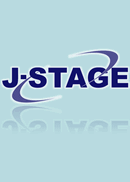All issues

Predecessor
Volume 44, Issue 12
Displaying 1-8 of 8 articles from this issue
- |<
- <
- 1
- >
- >|
-
H. Kuramoto, M. Maeda2006Volume 44Issue 12 Pages 3-9
Published: December 01, 2006
Released on J-STAGE: April 26, 2013
JOURNAL FREE ACCESSA reconnaissance team was organized to investigate the damages to RC buildings and housings due to a strong earthquake occurred in mid Java Island, Indonesia, at 5 : 53 local time, May 27, 2006. The main objective was to analyze major factors of the earthquake damages through the field survey on the structural planning, construction condition and site condition of the damaged buildings. The field survey was conducted by focusing (1) RC buildings in Yogyakarta city and (2) school buildings and the surrounding brick masonry housings in Bantul area. The earthquake damage to RC buildings in Yogyakarta city is different by a region and categorized into (1) the site damage, (2) the damage of a roof due to the lack of tie beams and (3) the story collapse due to the worse structural planning and relatively large earthquake input. The damage ratio of the brick masonry housings is severer than that of school buildings in Bantul area. This paper outlines the field survey and results of the examination.View full abstractDownload PDF (32757K) -
Y. Kitsutaka, T. Kanakubo2006Volume 44Issue 12 Pages 10-15
Published: December 01, 2006
Released on J-STAGE: April 26, 2013
JOURNAL FREE ACCESSThree new JCI standards were established by a JCI standard subcommittee. They are a method of test for fracture energy of concrete by use of notched beam, a method of test for load-displacement curve of fiber reinforced concrete by use of notched beam and a method of test for bending moment-curvature curve of fiber-reinforced cementitious composites. This report commented on a purpose and a background of the standard, the contents which we should evaluate, process to establishment, contents of an argument by committee activity, an examination matters in a standard subcommittee, an amendments from a draft and the text of these JCI standards.View full abstractDownload PDF (1392K) -
Y. Uchida, M. Katagiri2006Volume 44Issue 12 Pages 16-22
Published: December 01, 2006
Released on J-STAGE: April 26, 2013
JOURNAL FREE ACCESSUltra high strength concrete with 150 N/mm2 in compressive strength has been applied to the high-rise build-ings. Ultra high strength fiber reinforced concrete has been applied to the super structure of bridges. The feasibility of the further development in strength and toughness of those concretes is considered. It is shown that the concrete with 300 N/mm2 in compressive strength can be easily produced without special materials or processing techniques.View full abstractDownload PDF (6209K) -
H. Nakazawa, Y. Yabe, H. Narihara, S. Hayashi2006Volume 44Issue 12 Pages 23-30
Published: December 01, 2006
Released on J-STAGE: April 26, 2013
JOURNAL FREE ACCESSSince gas pressure welded splices of SD 490 bars occasionally snapped in the bend test up to 90 degrees, the performance evaluation of adequacy for using them at hinged zone has been suspended. The subcommittee for the performance of splices in Japan Pressure Welding Society (JPWS) carried out a sequence of investigations to settle the issue. The results of the bend tests, the cyclic tensile loading tests and investigations of inspection records in actual construction projects are reported in this paper. Results of the investigations suggest gas pressure welded SD 490 splices with appropriate quality control have adequate performance. The revised criterion for the bend test of gas pressure welded splices is also proposed.View full abstractDownload PDF (2515K) -
T. Daidai, M. Harada, S. Nakano, K. Nakabasami2006Volume 44Issue 12 Pages 31-38
Published: December 01, 2006
Released on J-STAGE: April 26, 2013
JOURNAL FREE ACCESSThe brittle fracture of steel bars in ASR-affected concrete bridge piers has recently been reported in various places in Japan. At present, the development of maintenance and rehabilitation techniques for such severely damaged concrete piers becomes a great concern for civil engineers. The authors have carried out the series of investigation on both the deterioration of concrete and the fracture of steel bars in concrete piers which were severely deteriorated again after the surface coating had been applied. This report describes the survey on the deterioration of ASH-damaged concrete bridge piers, and the reconstruction method of piers proposed based on the survey.View full abstractDownload PDF (34519K) -
[in Japanese], [in Japanese], [in Japanese], [in Japanese]2006Volume 44Issue 12 Pages 40-47
Published: December 01, 2006
Released on J-STAGE: April 26, 2013
JOURNAL FREE ACCESS -
[in Japanese], [in Japanese], [in Japanese], [in Japanese]2006Volume 44Issue 12 Pages 48-54
Published: December 01, 2006
Released on J-STAGE: April 26, 2013
JOURNAL FREE ACCESS -
[in Japanese], [in Japanese], [in Japanese], [in Japanese]2006Volume 44Issue 12 Pages 55-60
Published: December 01, 2006
Released on J-STAGE: April 26, 2013
JOURNAL FREE ACCESS
- |<
- <
- 1
- >
- >|